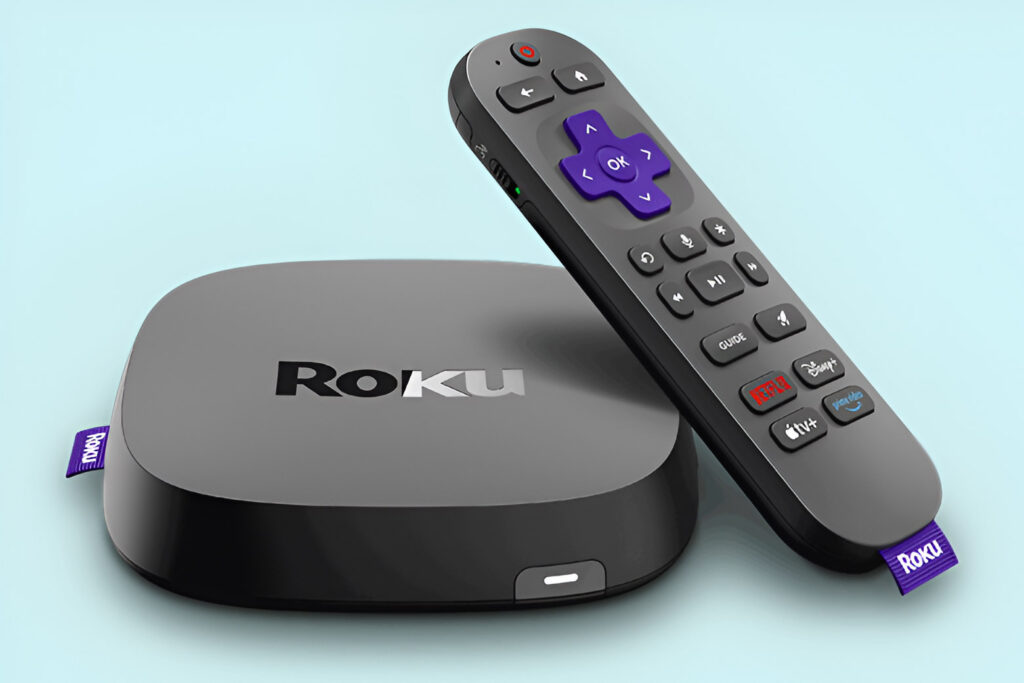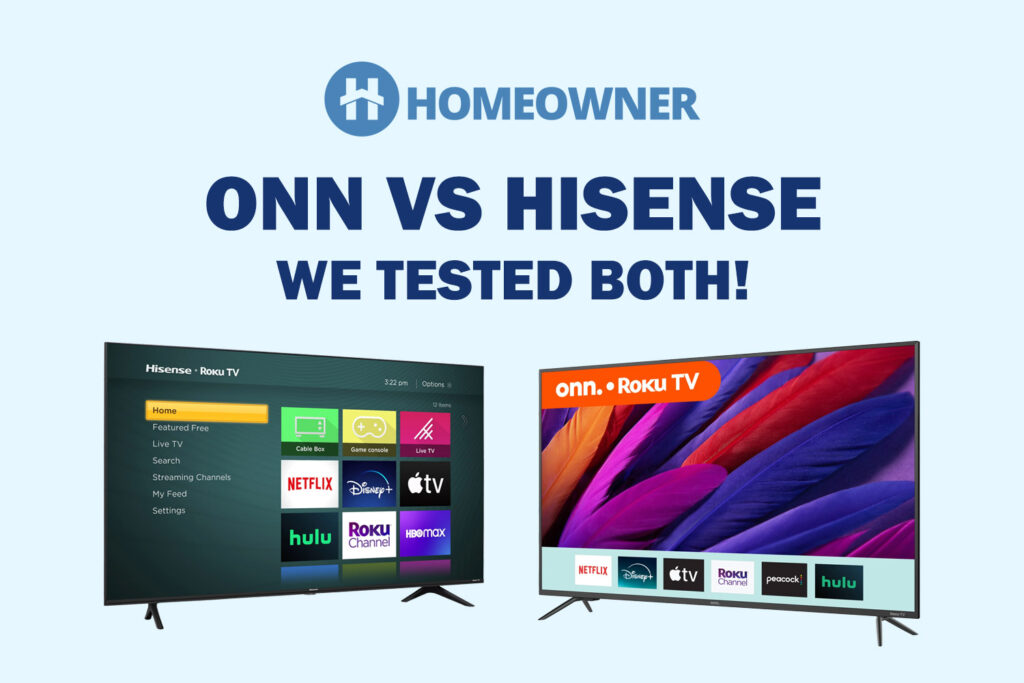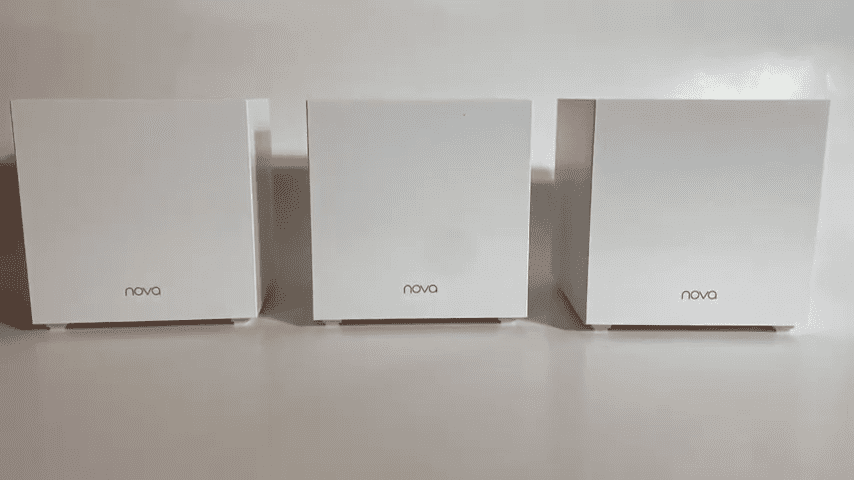
Known for its budget mesh systems, Tenda launched Tri-Band Nova MW12. It is a successor model of the Nova MW6 which I reviewed previously. Featuring an additional 5 GHz band, higher speed capacity, and multiple ethernet ports round up into a good value product.
The 3-pack variant of this Wi-Fi 5 mesh claims to cover large homes of up to 6,000 Sq Ft. This is quite impressive considering the price tag of $177. But the question remains how well its fare in real-life scenarios? Let's find out through this in-depth review of Tenda Nova MW12.
Tenda Nova MW12 Specs
| Wireless Standard | Wi-Fi 5 (802.11ac) |
| Aggregated Speed | AC2100 (2100 Mbps) |
| 2.4GHz Speed | 300 Mbps |
| 5GHz Speed | 867 Mbps |
| WiFi Range | Up to 6,000 Sq Ft |
| Maximum Device Capacity | 100 |
| Ports | Primary unit: 2 x LAN + 1WAN/LAN Satellite unit: 3 x LAN |
| App Support | Yes |
| QoS Prioritization | Yes |
| MU-MIMO | Yes |
| Security Standard | WPA2 |
| Processor | 900MHz Dual-Core Realtek RTL8198D |
| RAM | 256 MB |
| NAND Storage | Unknown |
| Dimensions | 3.9 x 3.9 x 3.9 inches |
| Weight | 0.70 Pounds Per Unit |
| Release Date | August 2020 |
Tenda Nova MW12 Review
I set up this Tenda Nova MW12 with AT&T Fiber 1 Gig plan and used it for a month. Over the period, I've had multiple binge-watching and gaming sessions. Simultaneously, at times, pushing the device to its limits.
Let me take you through its performance across multiple aspects.
1. Wireless Speeds & Suitability
The mesh system comes with the wave 2 version of Wi-Fi 5 standard, which has access to wider WiFi channel width. The addition of the 5 GHz band bumps up aggregated capacity to 2100 Mbps which is further distributed as follows:
| 2.4 GHz: 300 Mbps | 5 GHz: 867 Mbps |
Upon testing it with AT&T Fiber Gigabit plan, the results were pretty average. My iPhone 13 clocked download & upload speeds of 618 Mbps and 610 Mbps, respectively. This speed was consistent even in multiple speed tests.
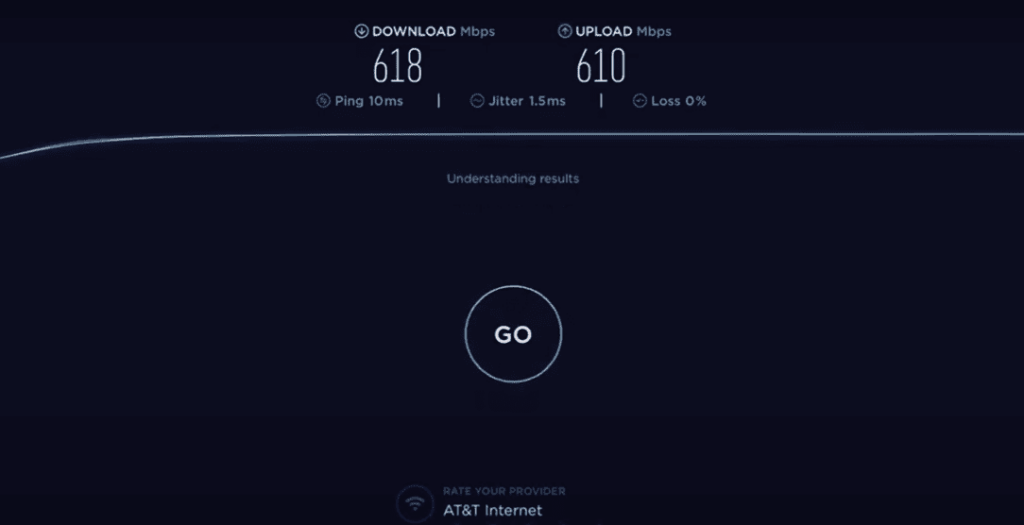
Although Tenda claims to support gig-level internet plans, it fails to offer stable network performance and consistently higher speed as offered by some top Gigabit mesh systems.
I could stream videos of FHD quality facing no hassles of buffering. The wired gaming with my PS5 looked seamless. Occasionally, I had both activities going simultaneously. The MW12 pulled through it. All said and done, it's safe to say that this mesh router works well with an internet speed of 500 Mbps.
2. WiFi Coverage & Devices Capacity
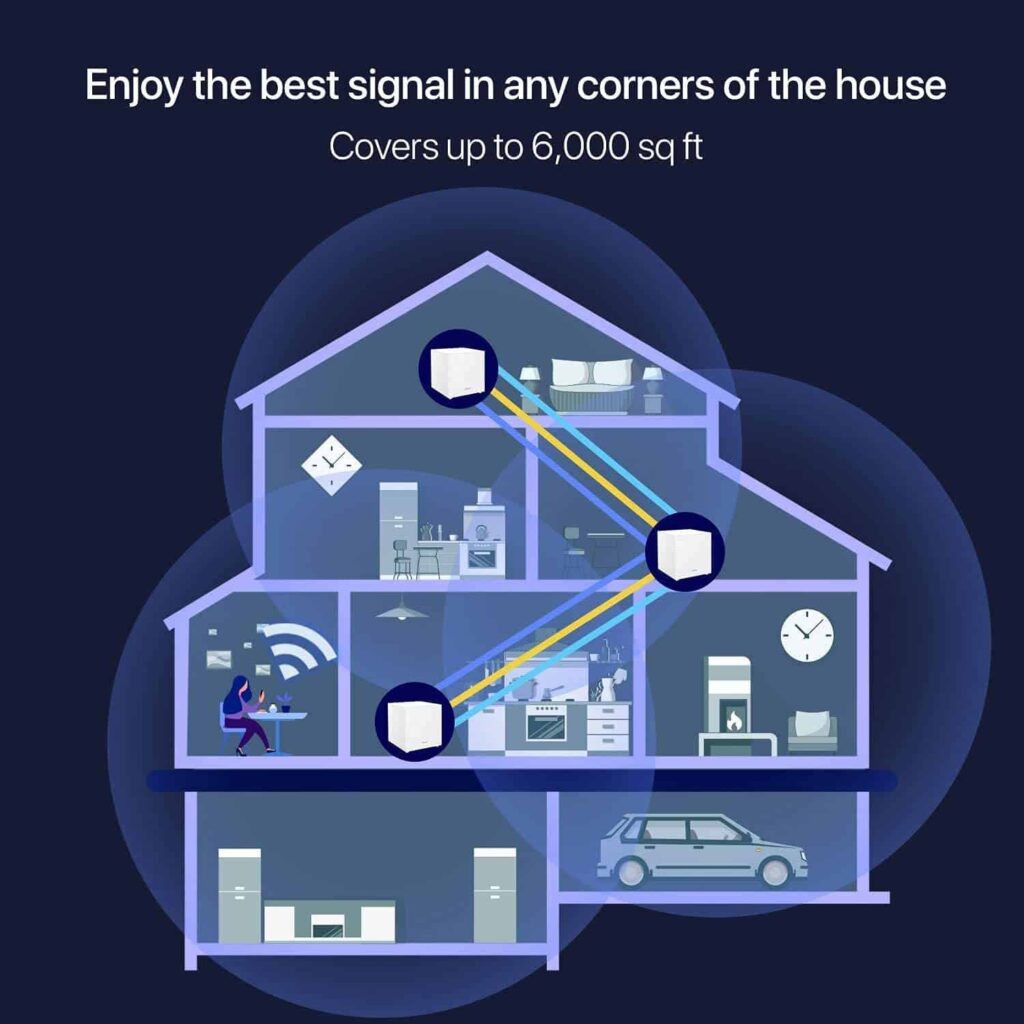
Every unit comes with 4 internal beamforming antennas that ensure a 3-pack delivers the Tenda Nova MW12 WiFi range of 6,000 Sq Ft. With just the primary and one satellite unit, I could cover the entirety of my duplex house, which spans a little over 3,500 Sq Ft.
With a 3-pack variant, the Tenda Nova mesh system could easily support 100 devices. At times, my household had over 40 devices, including, a combination of TV, laptops, mobiles, and tablets connected to my 2-pack Mesh WiFi, and that's when I noticed a bit of lag.
Other times I had no trouble making voice calls or streaming videos even in the furthest room on the top floor.
3. Design & Wired Connectivity
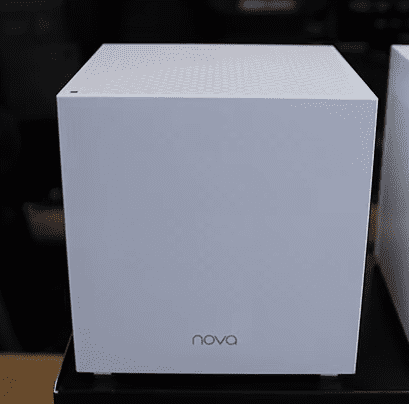
The white squares carry a minimalist chequered design with nothing but the logo on the front and a solo LED light on top. The plastic body keeps the nodes light, weighing less than 0.7 pounds each. and on the underside of each unit, you'll find the heat dissipation vents.
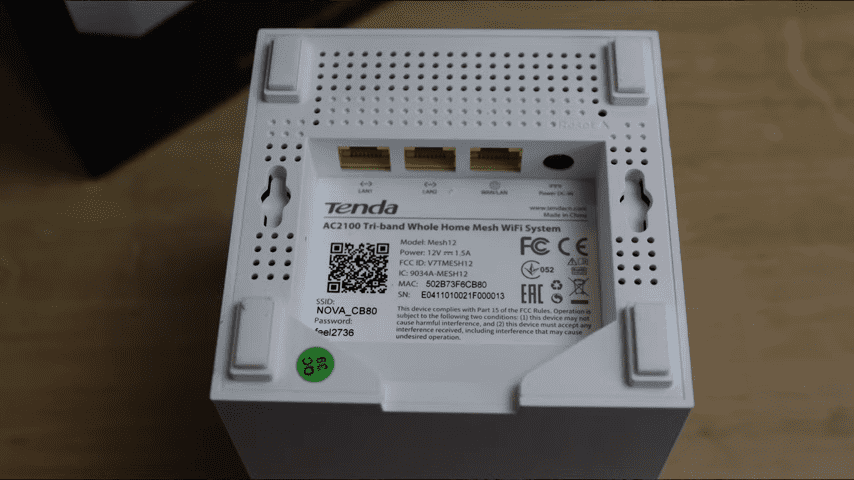
For wired connectivity, there are 3 Gig Ethernet ports on each unit (totalling 9) which qualify Nova MW12 as a good mesh WiFi with multiple ethernet ports. This port setup will be handy for households with multiple TV and gaming units. Both my TV and PS5 enjoyed the full scope of my 500 Mbps with the wired connections.
Plus, the wired backhaul facility ensures that data-intensive gadgets like smart TV and play stations get the most out of the bandwidth.
4. Security Features
Tenda mesh WiFi is packed with WPA2 encryption standards, and a guest network to prevent any unauthorized usage or data theft. The device blacklist and URL filters come as a part of the parental controls which will allow you to manage the internet exposure of your kids.
Built-in firewalls, VPN protects the devices connected to your home network from cyber attacks & privacy threats.
👉 Related Reading: 8 Best Mesh WiFi Systems in 2025 [Every Need & Budget]
5. Tenda Nova MW12 Setup
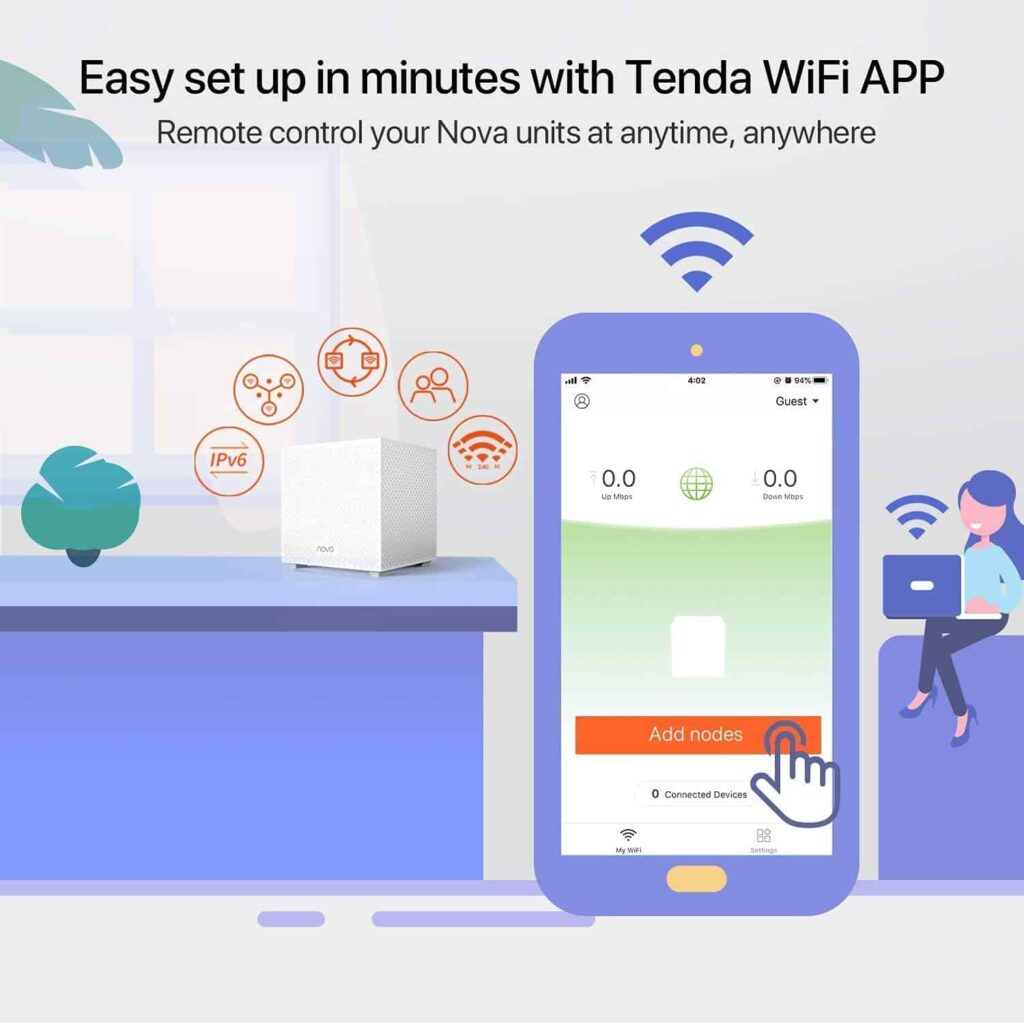
Setting up Tenda Nova MW12 was a breeze. The mobile-savvy users will find the Tenda App easy to operate. It took less than 20 minutes to get the primary node up and running. I connected the satellite node in no time.
You can add 12 nodes to your mesh wi-fi setup, including the older MW6 and MW3 nodes. You can use the web portal for managing your network, but the intuitive interface of the Tenda App makes it easier, and simple.
6. Hardware & Other Features
The hardware is one of the limiting features of the Nova MW12. It has a Dual-Core Realtek processor that clocks above 900 MHz, which is adequate for streaming media, standalone. But heavy data activities easily reveal the limitations of the 256MB RAM.
The capacity-oriented mode does a decent role in managing the limited hardware resources and allocating bandwidth when you have over 30 devices connected to your mesh system. The seamless roaming ensures there is no disruption in voice/video calls when you move inside the house.
The Pros & Cons of Tenda Nova MW12
Pros
- Tri-Band support
- Dedicated wireless Backhaul
- Smart QoS & Seamless roaming
- App-based remote management
- Ample ethernet ports
- Affordable price
Cons
- Lacks Wi-Fi 6 support
- Limited hardware capacity
Frequently Asked Questions
Tenda claims the MW12 can support over 100 devices. But the limited hardware capacity of the mesh unit would find it hard to cope with data-intensive activities when the number of devices crosses 30.
While MW6 is a Dual-Band, MW12 comes with a Tri-Band and improved throughput. MW12 has an additional ethernet port (3) per unit, compared to MW6's 2 Ethernet ports. Every unit of MW-12 has 4 internal beamforming antennas compared to MW6's 2. MW12 comes with a dedicated wireless backhaul.
Every unit has 4 internal beamforming antennas to ensure a strong range of up to 2,000 sq ft. The three-pack can cover close to 6,000 sq ft if you get the placement right.
Yes, the MW12 supports ethernet backhaul. Every node has three Ethernet ports, which allow the nodes to communicate through the wired network. This enables ethernet backhaul, an immense advantage for heavy streaming devices.
On a price discount, absolutely yes. Most of the devices I use are still compatible with Wi-Fi 5 standards, which makes the mesh system relevant for most users in 2025.
Conclusion
That was it for my Tenda Nova MW12 review. The dual 5GHz, wired and wireless backhaul, makes a strong case in favor of this budget mesh WiFi. If you are in a large duplex home or an office with limited data-intensive activities, the mesh router will be a great value for the money option for the coverage and ease of management it offers.



